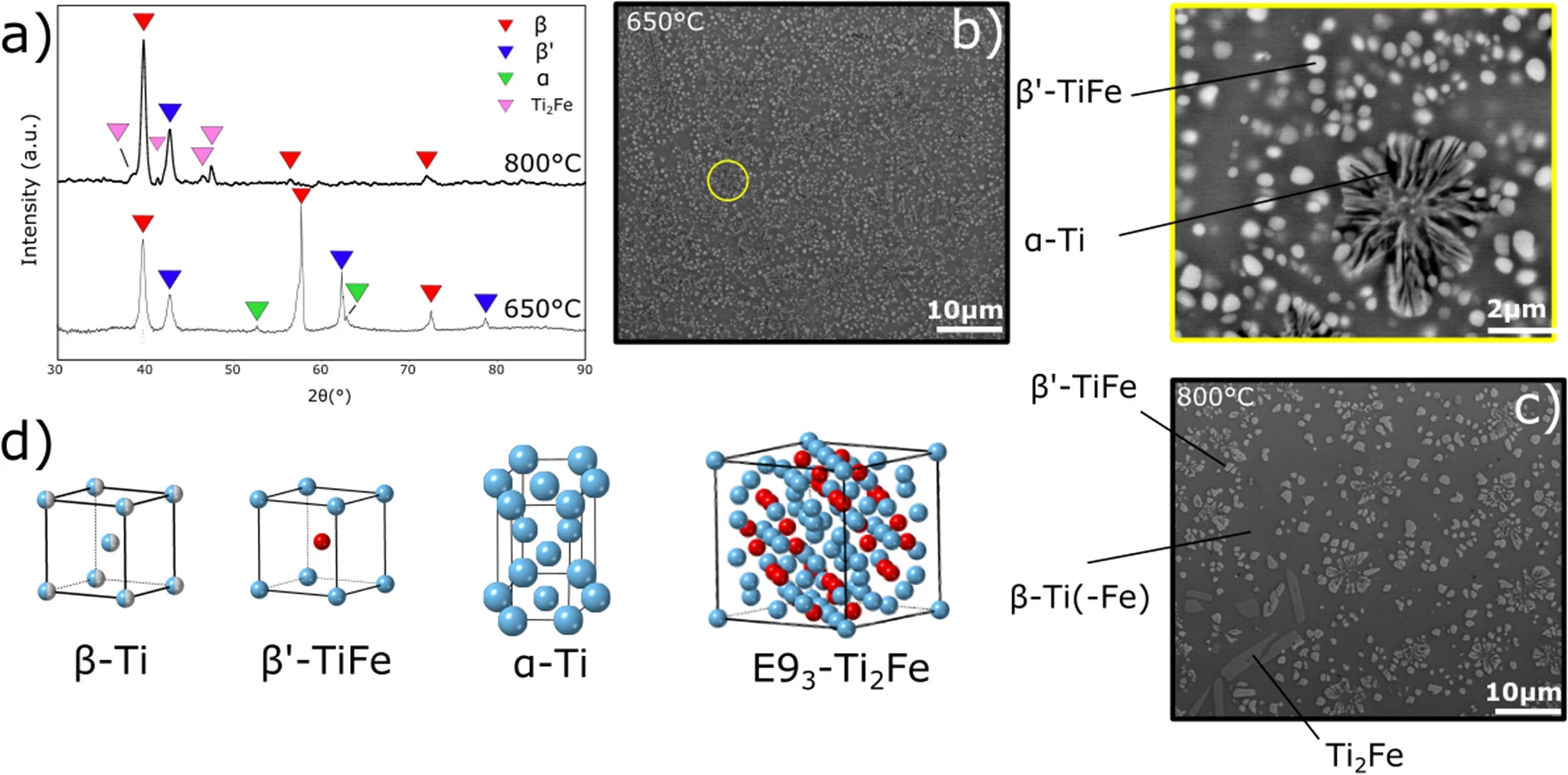P. O’Kelly, A. Watson, G. Schmidt, M.C. Galetz, A.J. Knowles
Journal of Phase Equilibria and Diffusion 44 (2023), 738-750, DOI: 10.1007/s11669-023-01066-8

Recent design and development of precipitate reinforced refractory metal alloys demonstrate the possibility of A2 + B2 bcc superalloys as a new class of high temperature materials. Existing β-Ti alloys do not typically employ reinforcement with intermetallics, as in other high temperature alloys; to this effect sufficient additions of Fe, a low cost β-Ti stabiliser, can promote formation of an ordered-bcc intermetallic phase, β′-TiFe (B2), offering scope to develop a β + β′ dual-phase field. However, key uncertainties exist in the base Ti-Fe binary. The current research evaluates the formation of ordered-bcc TiFe precipitates within a disordered-bcc β-Ti matrix through variable heat treatment strategies. The microstructure optimisation has revealed new insight into the Ti-Fe phase equilibria at near eutectoid temperatures in the purported dual-phase field, where a complex interplay between β-Ti, β′-TiFe and α-Ti exists.